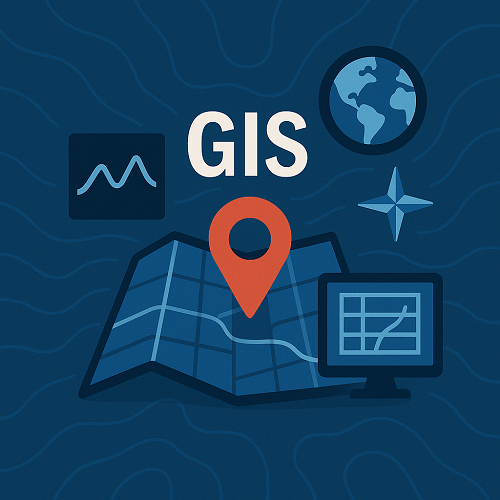TL;DR
- Artificial Intelligence is now deeply integrated into GIS workflows, enhancing predictive analytics and automation.
- Advanced remote sensing improves accuracy for environmental monitoring and urban mapping.
- Interactive 3D and real-time data visualizations are revolutionizing decision-making.
- GIS is playing a larger role in disaster risk reduction and smart city planning.
- Esri and other leaders are releasing robust spatial analytics tools for faster insights.
What’s New Right Now
The GIS sector in 2025 is embracing major technological shifts. AI-driven spatial analysis is now standard in many platforms, improving efficiency and reducing manual processing time. Companies like Esri have unveiled new analytic capabilities that leverage machine learning models directly within their mapping environments. Remote sensing continues to advance through higher resolution satellite imagery and drone-based LiDAR, enabling more precise land-use classification (NASA Earth Observatory). Additionally, live geospatial dashboards and immersive 3D city models are making it easier for stakeholders to interpret complex spatial information.
Why It Matters
For businesses, these innovations mean faster, more accurate insights into markets, infrastructure, and environmental risks. Real-time data visualization helps executives respond to changes without delay. Technically, greater AI integration into GIS reduces the need for repetitive manual tasks, freeing analysts to focus on strategic modelling. Public agencies can forecast and plan for urban growth or natural disaster scenarios with a higher degree of confidence, ultimately saving time and resources.
Deep Dive: Key Developments in GIS
AI-Enhanced Spatial Analytics
By embedding machine learning directly into GIS tools, users can now perform predictive modeling—such as projecting urban sprawl or forecasting flood impact—without exporting datasets to separate platforms. This streamlines workflows and lowers operational complexity.
Remote Sensing Evolution
Emerging sensor technologies combined with AI-based image classification have pushed the boundaries of land cover mapping, crop health assessment, and coastal erosion monitoring. High-frequency satellite passes enable near real-time environmental intelligence.
Advanced Data Visualization
Interactive, 3D-ready GIS platforms allow cross-disciplinary teams to interpret spatial data more intuitively. Whether planning a new transit corridor or assessing wildfire zones, 3D visualizations help align technical models with stakeholder perspectives.
Comparison of Emerging GIS Trends
| Trend/Technology | Primary Benefit | Adoption Challenges |
|---|---|---|
| AI-Integrated GIS | Faster, automated spatial analysis | Requires high-quality training data |
| High-Res Remote Sensing | Greater mapping accuracy | Cost of advanced sensors and data |
| 3D/AR Visualization | Improved stakeholder engagement | Steep learning curve for new tools |
| Cloud-Based GIS | Scalable storage and access | Data security and compliance risks |
Mini Case Study: Urban Heat Island Mapping
Problem: A mid-sized city faced rising summer temperatures, with vulnerable communities disproportionately affected. Existing data on urban heat was outdated and lacked fine spatial resolution.
Approach: The city deployed drone-based thermal imaging combined with AI-powered GIS analysis to map urban heat islands in detail. Real-time streaming data was integrated into a dynamic dashboard for city planners.
Outcome: Within three months, the municipality identified priority zones for green infrastructure investment. Post-implementation monitoring showed a measurable average temperature reduction of 1.5°C in the targeted areas after one year.
Implementation Checklist
- Assess organizational GIS readiness and technical capacity.
- Identify high-impact use cases for AI-enhanced or remote sensing workflows.
- Source reliable, up-to-date geospatial datasets with proper licensing.
- Select a scalable GIS platform with integrated analytics functions.
- Train analysts and decision-makers in new visualization and AI capabilities.
- Pilot the solution and refine based on performance metrics.
- Implement organization-wide deployment with clear data governance rules.
- Continuously monitor, update, and optimize GIS models and outputs.
Frequently Asked Questions
What is the role of AI in GIS today?
AI automates spatial analysis, identifies patterns, predicts changes, and reduces manual data processing efforts.
How has remote sensing improved GIS applications?
Higher resolution sensors and faster revisit rates allow for more timely and accurate mapping for agriculture, disaster response, and urban planning.
Are 3D GIS models only useful for urban contexts?
No, 3D models are also applied in environmental management, mining operations, and infrastructure monitoring in rural or remote areas.
What are common barriers to adopting advanced GIS tools?
High data costs, the need for specialized skills, and ensuring data privacy and security are common challenges.
Can cloud-based GIS handle sensitive data?
Yes, but organizations must implement strict access controls, encryption, and compliance frameworks.
How quickly can GIS projects start delivering value?
With clear goals and quality data, pilot GIS projects can produce actionable insights within weeks.
Conclusion
In 2025, GIS is no longer a niche technical tool—it is a core intelligence system driving smarter, faster decisions across industries. AI, remote sensing, and advanced visualization are expanding its reach and impact. To stay competitive, organizations should invest now in these capabilities and build the skills required to harness them fully. For expert guidance on leveraging these transformative tools, explore our GIS services.
